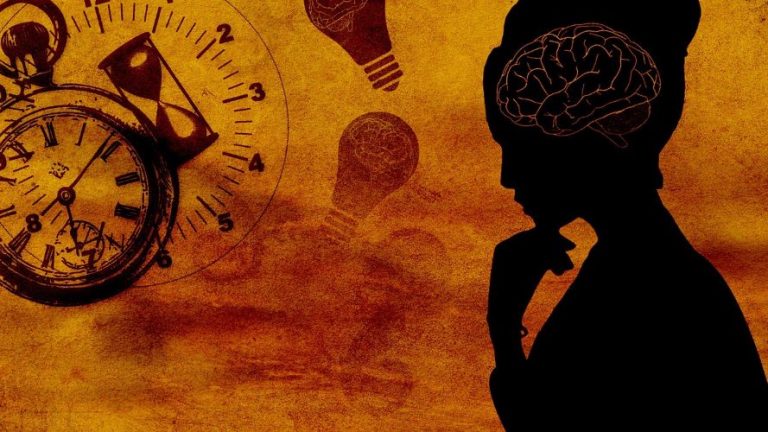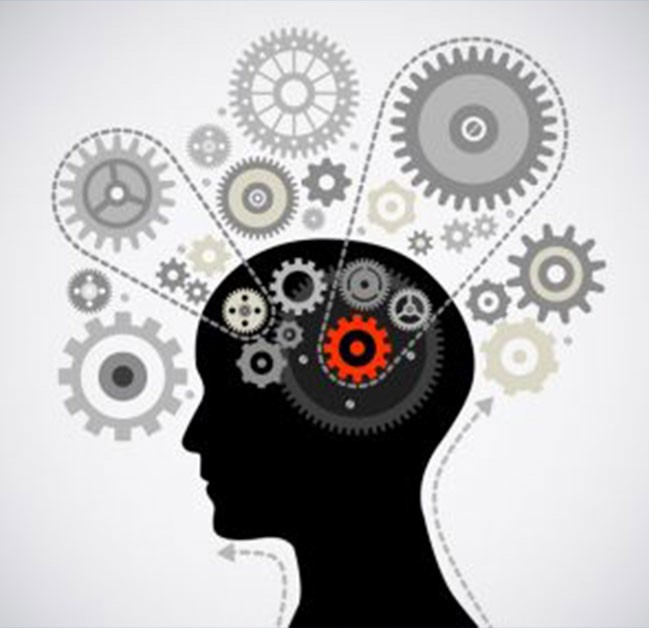
All the narratives are created to satisfy a quest. Nothing happens in isolation, unexpected or uninvited.
Dr. Jernail S. Anand
The Upanishads, which are the core of Indian philosophy, lay down the transition of knowledge from the Guru to his followers who sit around him, under a tree. A sort of question and answer session was in prevalence to build religious and spiritual concepts. Outside this spiritual domain, Psycho-trapy stands for psychologically trapping a man into doing something. So far as the idea of the structure of human narrative is concerned, essentially it is Psychotrapic. And it is through psycho-trapy that the narratives are built. Human narratives are generally replete with amnesia, gangs, mystery, multiple identities, obsessive love, possessive characters, psychopaths, secret organizations, serial killers, thrillers, torture, trap etc. If these things are not there, they lack the human interest. We see a film or read a novel, because it has some twisted characters, which need to be corrected. Thus, the idea of correction can enter the text, only if there is subversion.
Every action has an equal and opposite reaction. Newton’s words took the whole world with a storm. Even till today, theories are being devised based on these observations, which have been made into laws. After the action, there is a reaction. And then, things don’t stop. But my story begins in the realm that falls before that action took place. What forced you into that action? So that a whole narrative has been built up now? That action was the result, may be of some reaction which was already taking place in a chain. I believe that human action is a part of a continuum. I want to examine those moments when a certain action was taken. Someone might have asked you some question. You might have seen something. You might have been coaxed into thinking in a particular way. Or, you might have been psycho-trapped?
 The narrative that started thereafter was dialogic. There was someone, visible or invisible, who participated in the silent dialogue, and it helped move the civilization forward. In an interview with a public figure, the anchors are seen putting negative questions, which coax the speakers into answers they want. This is what is happening in the building up of social and political narratives. What is being done is the result of coaxing by invisible anchors, or I wouldn’t mind saying angels, who want people to do certain things to suit their design. Anchors ask direct questions, while angels work through subtle means by making the people think thoughts they want them to think. All that you do, is not according to your calculation. Only ten percent is predesigned, 90 percent of it is pre-designated.
The narrative that started thereafter was dialogic. There was someone, visible or invisible, who participated in the silent dialogue, and it helped move the civilization forward. In an interview with a public figure, the anchors are seen putting negative questions, which coax the speakers into answers they want. This is what is happening in the building up of social and political narratives. What is being done is the result of coaxing by invisible anchors, or I wouldn’t mind saying angels, who want people to do certain things to suit their design. Anchors ask direct questions, while angels work through subtle means by making the people think thoughts they want them to think. All that you do, is not according to your calculation. Only ten percent is predesigned, 90 percent of it is pre-designated.
AUTO-INTIMATION
The movement of civilization in a particular direction cannot be an act of auto-intimation. Even if sheep are moving in a herd, they are following the herd-sense. Even in the case of the movement of civilization, you can see every act is taking place to satisfy a query. Or, it can be said that every action is a reply to a question which is a part of the invisible questionnaire. No one knows who is where to coax mankind to take decisions which it does. Obvious reasons may be many, and these reasons are the sub-texture of this act. Men act in response to the questions which time poses before them. Every action of man is a presentation, or an explanation of some philosophy working behind the scene. Thus, all human narratives appear to be in the form of a dialogue, a psycho-trap.
LANGUAGE AND THE NARRATIVE
A narrative is putting words into a particular pattern. Animals and birds are also a part of this universal narrative. They use a language peculiarly their own, in which no written alphabet is required. But they would have become extinct by now, if they had not been able to pass on their wisdom to the new generations, by the word of mouth, which we have not been able to convey to our upcoming generations, notwithstanding our great scriptures and epical wars like Mahabharta and Ramayana. Doesn’t it put a question mark on human capability to learn things? Don’t we behave like mentally retarded children?
There was someone, visible or invisible, who participated in the silent dialogue, and it helped move the civilization forward.
Men are considered very high on the evolutionary scale, and the use of electronics and AI have brought them out of the animal domain, and put them close to angels, and demons too, because too much sophistication, as we have seen, has cut down on the divine element in man, and introduced him to the darker forces pervading the cosmos.
In the order divine, the first empire which created its narrative with the eye-touch phenomenon had winds, waters and forests. The birds and beasts belong to the second empire which rested on body language and the language of signs. Human world belongs to the third empire. We humans who are mentally not so sound, resort to AI to equalize our powers with birds and beasts. An animal does not forget the way he has once travelled by. But we need GPS. What they have suffered passes safely over to next generations. But we need written history books, universities, examinations and certificates.
Now, the question is how the things that happen, are made to happen. How history takes its course, and how men are involved in the creation of historical narratives.
Writing the history has two aspects. One is creating history and the other is recording it. I am concerned with both at this juncture. Every object, and every situation, finally answers a question, visible or invisible. The narrative that we call history is also a socio-political construct created in response to some invisible questions. Suppose, I say, I am happy here. This innocent looking sentence has a latent zoography around it. We need to understand one thing, that our speech is a continuum. So, is our language, even if silence spaces our outbursts. Even our consciousness is a luminous flow which when breaks signals the end of all for man. Speech which is a continuum, is spaced by silence. And you speak, what is required by the silence. A man is full of thoughts. These thoughts are running round the clock, even when we are asleep. Speech is just a physical dimension given to those ideas. Even otherwise, the thoughts are a flow. When we are not expressing them in words, they are there in the form a silence.
IS SILENCE A DECEPTIVE PHENOMENON?
Silence is a social and psychological construct. Don’t forget, we are victims of psycho-trapy also. When you are not speaking, others are not listening anything. In this way, there is a silent contract between the two partners. Reduced to bare minimum, there is a speaker, and there is a listener, or a responder. The speaker is not speaking all the time. He stops for breath. And sometimes he does not speak at all. Is it silence? When he is silent, are his thoughts silent too? Rather, they are working at greater speed. Actually, he is not silent at all. Only, the physical dimension of thought is missing.
The movement of civilization in a particular direction cannot be an act of auto-intimation
While on ‘Silence’ let us consider music. When a person is singing, the space when he is not singing is filled with music. So that finally, music and his words, together take the form of a song. In the same way, when a person speaks, not only his words, his silence also forms a part of his narration.
 Let us address the most important issue of history, language, and any socio-political narrative. We shall do nothing if there is no stimuli before us. This stimuli makes us speak on a particular emotion, and act in a peculiar way. Our intonations change, depending on the demands of time. And finally, whatever we are doing, saying or even thinking, and even if we are not doing anything, it is always in response to something which is being asked of us.
Let us address the most important issue of history, language, and any socio-political narrative. We shall do nothing if there is no stimuli before us. This stimuli makes us speak on a particular emotion, and act in a peculiar way. Our intonations change, depending on the demands of time. And finally, whatever we are doing, saying or even thinking, and even if we are not doing anything, it is always in response to something which is being asked of us.
THE CREATION OF HISTORY
History is not only written, but created in dialogic form. Actions are externalized form of thought. A thought can be felt. But to express it, we need words. And to give life to it, we need action. So, this is all that life is made up of. Thoughts, words, [written unwritten] and actions. If action has a reaction, thoughts too have alter-thoughts.
We can now revert to the theory of thesis and antithesis. In fact, whatever I have found in human action and thought, it is based on this anti-thesis. In an interview, the main thing is not what someone has said, but what was asked of him.
A train does not move on wheels. It moves on rails. Rails and wheels together make it work. In the same way, two persons talking are like the connect between the rail and the wheel. One is asking questions, to which the other will respond. In this way, together they build an edifice of a dialogue which later on may take the form of history. It is the story of reaction. All the narratives are created to satisfy a quest. Nothing happens in isolation, unexpected or uninvited.
Read: Of a Civilization in the Quick Sands of Time
____________________
 Dr. Jernail Singh Anand, President of the International Academy of Ethics, is author of 161 books in English poetry, fiction, non-fiction, philosophy and spirituality. He was awarded Charter of Morava, the great Award by Serbian Writers Association, Belgrade and his name was engraved on the Poets’ Rock in Serbia. The Academy of Arts and philosophical Sciences of Bari [Italy] honored him with the award of an Honorable Academic. Recently, he was awarded Doctor of Philosophy [Honoris Causa] by the University of Engg and Management, Jaipur. Recently, he organized an International Conference on Contemporary Ethics at Chandigarh. His most phenomenal book is Lustus: The Prince of Darkness [first epic of the Mahkaal Trilogy]. Email: anandjs55@yahoo.com
Dr. Jernail Singh Anand, President of the International Academy of Ethics, is author of 161 books in English poetry, fiction, non-fiction, philosophy and spirituality. He was awarded Charter of Morava, the great Award by Serbian Writers Association, Belgrade and his name was engraved on the Poets’ Rock in Serbia. The Academy of Arts and philosophical Sciences of Bari [Italy] honored him with the award of an Honorable Academic. Recently, he was awarded Doctor of Philosophy [Honoris Causa] by the University of Engg and Management, Jaipur. Recently, he organized an International Conference on Contemporary Ethics at Chandigarh. His most phenomenal book is Lustus: The Prince of Darkness [first epic of the Mahkaal Trilogy]. Email: anandjs55@yahoo.com
Link Bibliography:
[…] Read: The Invisible Questionnaire: The Dialogic Structure of Human Narrative […]